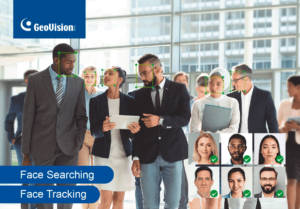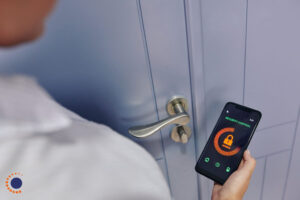
Increasingly, end user entities are embracing the post-pandemic world. Yet they need to strike a balance between reopening to visitors and keeping staff healthy and safe. A good visitor management system can come in handy in this regard.
While the pandemic is not completely over yet, end user entities in certain parts of the world are actively seeking to reopen, emboldened by reduced infection rates and mass vaccination efforts. New York City Mayor Bill de Blasio, for example, has announced the city may fully reopen on July 1, meaning restaurants, bars and shops, among others, can be open at full capacity. The U.K., meanwhile, has announced further ease of restrictions starting May 17, when the majority of the indoor and remaining outdoor economy can reopen.
Visitor management
When end user entities reopen, they inevitably need to deal with visitors. This may be a bit challenging as visitors may be infected by or exposed to the coronavirus. In this regard, managing visitors has become more important than ever for end user organizations, post-pandemic.
Businesses that are returning to work have the utmost responsibility to ensure the health and safety of employees by having all visitors go through a screening process that includes COVID-related health questions, temperature detection, contactless workflows and visitor self-sign-in workflows to limit interaction with employees.
Companies will also need to consider whether or not to continue allowing walk-in visitors. Therefore many companies will require advanced visitor pre-registration so they can preauthorize, pre-screen and schedule who’s going to be onsite at any given time. This way, when the visitor shows up they are fully vetted and authorized.
A changing workplace structure also makes visitor management important. We see a more complex workplace in the future, with greater emphasis on hybrid/flexible work schedules and the increasing use of contingent employees or contracts. This means there will no longer be a critical mass of ‘known’ or ‘safe’ individuals, but rather a shifting group that has a variety of schedules. Physical security, like cybersecurity, will need to adopt a zero-trust approach where everyone is a visitor and needs to be treated as a risk.
VMS can help

This is where visitor management systems can play a role in helping end users reopening to visitors while maintaining a safe and healthy environment. Having a visitor management system installed helps give your visitors, contractors and staff the surety that your business takes workplace health and safety seriously. A seamless system slots into current practices, minimizes interruption and ultimately enhances daily operations.
Employee safety and trust is paramount, and is only possible through a thoughtfully implemented system. This system also needs to be easily accessible, allow for team coordination, and not get in the way of work being done. Visitor management systems can help employees safely bring guests and colleagues onto worksites. Contact tracing tools that confirm compliance with health guidelines and workspace accommodations ensure that anyone else on-site is safe and protected.
And end user entities in certain vertical markets can especially benefit from visitor management systems, post-pandemic.
(Visitor management by way of) QR code solutions are particularly useful in buildings that have numerous visitors on a regular basis and have to manage access to areas with different levels of restrictions. That can be a shared building, which, for example, hosts hot-desking areas for freelancers or students as well as start-up offices, and needs to ensure that certain people can enter only during working or study hours and that the offices stay safe and secure.
In hospitals, the very same low-touch solution can be used to act as a force multiplier by reducing the shared touchpoints (for instance keypads), where germs and bacteria could be transmitted between visitors, patients and staff. In a post-pandemic world, where retailers are allowed to open their doors again, access control as part of the visitor management process could build the basis for extended and unmanned opening hours. With a unified IP-based system, stores could provide a printed QR code at the entrance, where customers can identify themselves with an electronic ID to enter the store.
From contactless to customization

Today’s visitor management systems have evolved to more than just solutions that replace pens and paper. In particular, they now have certain features that meet users’ post-pandemic needs. These are discussed as follows.
Contactless: All security systems now strive to be contactless. Visitor management systems are no exception. Contactless sign in from a user’s personal mobile device. These must be simple enough to use, but complex enough to replicate a fully featured visitor management system.
Integration with health screening systems: Many end user entities have deployed visitor health screening systems, which can now be integrated with the visitor management system. Businesses looking to follow the CDC recommendation to monitor every visitor’s temperature can automatically manage the acceptance of visitors based on a configurable temperature threshold. If a visitor has a temperature over the threshold, the visitor management system will automatically block their sign in.
Strong customization: Finally, visitor management systems are now highly customized to suit different post-pandemic needs. Visitor management tools need to provide low-code customization capabilities to administrators in order to support unknown future requirements. Over the pandemic, for example, enterprise customers used this platform to address employee health control requirements, such as health attestations, proof of vaccination and capacity management. Leading security vendors will need to allow for easy modifications to their tools in order for organizations to address novel concerns like insurance validation, work from home status, and other yet-to-be-defined requirements.
Source: a&s Magazine



































































